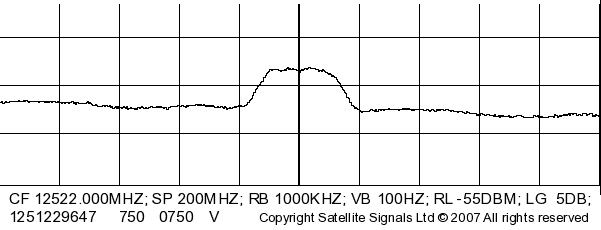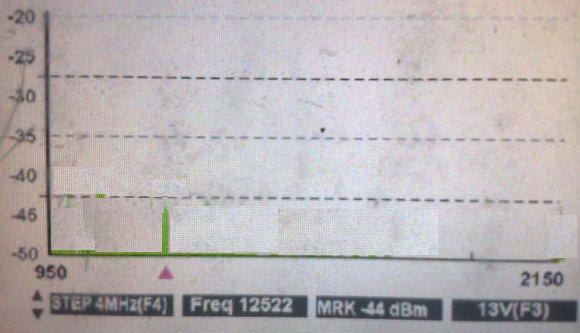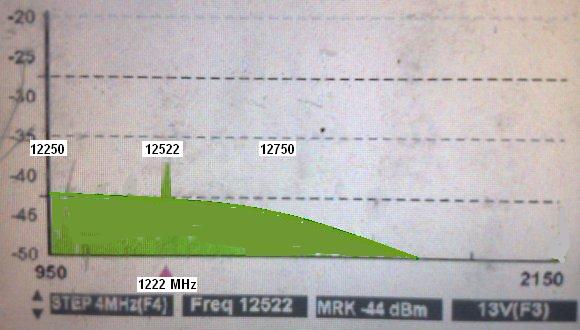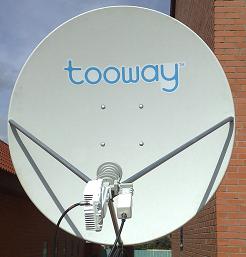| Home Login Register |
| Satellite Internet forum › Satellite Internet - Europe › Tooway in moscow? |
|
Pages: 1
|
Tooway in moscow?(Read 17930 times) |
|
a.efremov
Member
★★ Offline Posts: 17 |
Aug 17th, 2009 at 8:40pm
|
| Back to top |
IP Logged
|
|
a.efremov
Member
★★ Offline Posts: 17 |
Reply #1 - Aug 18th, 2009 at 5:00am
|
| Back to top |
IP Logged
|
|
europe-satellite.com
Senior Member
★★★ Offline Posts: 541 London UK |
Reply #2 - Aug 18th, 2009 at 9:35am
|
| Back to top |
IP Logged
|
|
a.efremov
Member
★★ Offline Posts: 17 |
Reply #3 - Aug 18th, 2009 at 3:00pm
|
| Back to top |
IP Logged
|
|
Eric Johnston
YaBB Moderator
★★★★★ Offline Posts: 2109 |
Reply #4 - Aug 18th, 2009 at 3:27pm
|
| Back to top |
IP Logged
|
|
a.efremov
Member
★★ Offline Posts: 17 |
Reply #5 - Aug 18th, 2009 at 7:39pm
|
| Back to top |
IP Logged
|
|
Eric Johnston
YaBB Moderator
★★★★★ Offline Posts: 2109 |
Reply #6 - Aug 18th, 2009 at 8:19pm
|
| Back to top |
« Last Edit: Aug 19th, 2009 at 8:44am by Eric Johnston »
IP Logged
|
|
a.efremov
Member
★★ Offline Posts: 17 |
Reply #7 - Aug 19th, 2009 at 5:42am
|
| Back to top |
IP Logged
|
|
Eric Johnston
YaBB Moderator
★★★★★ Offline Posts: 2109 |
Reply #8 - Aug 19th, 2009 at 8:41am
|
| Back to top |
IP Logged
|
|
a.efremov
Member
★★ Offline Posts: 17 |
Reply #9 - Aug 21st, 2009 at 7:22pm
|
| Back to top |
IP Logged
|
|
Eric Johnston
YaBB Moderator
★★★★★ Offline Posts: 2109 |
Reply #10 - Aug 21st, 2009 at 8:03pm
|
| Back to top |
IP Logged
|
|
a.efremov
Member
★★ Offline Posts: 17 |
Reply #11 - Aug 21st, 2009 at 10:00pm
|
| Back to top |
IP Logged
|
|
Eric Johnston
YaBB Moderator
★★★★★ Offline Posts: 2109 |
Reply #12 - Aug 21st, 2009 at 11:10pm
|
| Back to top |
« Last Edit: Aug 25th, 2009 at 8:11pm by Eric Johnston »
IP Logged
|
|
a.efremov
Member
★★ Offline Posts: 17 |
Reply #13 - Aug 24th, 2009 at 6:31pm
|
| Back to top |
IP Logged
|
|
Eric Johnston
YaBB Moderator
★★★★★ Offline Posts: 2109 |
Reply #14 - Aug 25th, 2009 at 10:16am
|
| Back to top |
« Last Edit: Aug 25th, 2009 at 8:11pm by Eric Johnston »
IP Logged
|
|
a.efremov
Member
★★ Offline Posts: 17 |
Reply #15 - Aug 25th, 2009 at 3:11pm
|
| Back to top |
IP Logged
|
|
Eric Johnston
YaBB Moderator
★★★★★ Offline Posts: 2109 |
Reply #16 - Aug 25th, 2009 at 4:00pm
|
| Back to top |
IP Logged
|
|
a.efremov
Member
★★ Offline Posts: 17 |
Reply #17 - Aug 25th, 2009 at 4:45pm
|
| Back to top |
IP Logged
|
|
Eric Johnston
YaBB Moderator
★★★★★ Offline Posts: 2109 |
Reply #18 - Aug 25th, 2009 at 5:29pm
|
| Back to top |
IP Logged
|
|
Eric Johnston
YaBB Moderator
★★★★★ Offline Posts: 2109 |
Reply #19 - Aug 25th, 2009 at 8:14pm
|
| Back to top |
« Last Edit: Aug 25th, 2009 at 9:19pm by Eric Johnston »
IP Logged
|
|
a.efremov
Member
★★ Offline Posts: 17 |
Reply #20 - Aug 27th, 2009 at 8:32am
|
| Back to top |
IP Logged
|
|
Admin1
YaBB Admin
★★★★★ Offline Posts: 1222 |
Reply #21 - Aug 27th, 2009 at 10:51am
|
| Back to top |
« Last Edit: Aug 27th, 2009 at 2:45pm by Eric Johnston »
IP Logged
|
|
a.efremov
Member
★★ Offline Posts: 17 |
Reply #22 - Aug 27th, 2009 at 1:27pm
|
| Back to top |
IP Logged
|
|
Eric Johnston
YaBB Moderator
★★★★★ Offline Posts: 2109 |
Reply #23 - Aug 27th, 2009 at 7:24pm
|
| Back to top |
IP Logged
|
|
a.efremov
Member
★★ Offline Posts: 17 |
Reply #24 - Aug 28th, 2009 at 7:48am
|
| Back to top |
« Last Edit: Sep 3rd, 2009 at 6:54am by a.efremov »
IP Logged
|
|
Pages: 1
|
Email me: eric@satsig.net
Powered by YaBB 2.5.2!
YaBB Forum Software © 2000-. All Rights Reserved.
Disclaimer, Terms of Use and Privacy Forum User Agreement Forum rules Cookie policy.








